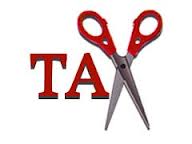The term Vulture Fund is not new as this was the method used by Nama, IBRC, Anglo, Bank of Scotland and National Irish bank (to name a few) who used the sale of their loans books to 3rd parties to clear up their under performing loans.
These Vulture Funds or Investment Funds as they prefer to be called, have bought these bad loans from the main banks at a substantial discount and their only mission is to recover as much as possible from the debts they have bought. Given that both PTSB and Ulster bank announced earlier this year that they will sell circa 25,000 loans to Vulture Funds; this is already a hot topic in 2018 with demonstrators gathered outside the Ideal Homes Exhibition at the RDS on Saturday 21st April 2018 to protest the event’s main sponsors Permanent TSB.
This sale of loans by PTSB has now come to fruition by todays announcement that PTSB has sold 10,000 loans to an investment fund managed by Start. The portfolio contains around 10,700 non-performing loans, 7,400 of which are owner-occupier mortgages.
I think that no more than the IMF 10 years ago the advent of Vulture Funds entering our financial system is a wake up call that the years of kicking the can down the road by the Irish banks is now over.
Unlike the main Irish banks these vulture funds are not concerned with the negative publicity of pursuing these debts through any means possible. This could be through debt collection agencies, legal proceedings, home repossession and general harassment from their arrears support teams.
The Vulture Funds business model is short-term, they have no interest in having a long-term arrangement or relationship with their new customer. They just want cash!!!
Where does this leave the hundred thousand plus home owners who are in fear of losing their homes…….it leaves them in a tough spot.
Despite the fact that debt solutions were introduced by the Government in 2012 through the personal insolvency legislation less than 2,000 people have availed of the legislation.
The main reason in my experience is that they don’t understand that this solution applies to them and that it can help them. There is a lot of misinformation (I call it pub talk) about the legislation but from my hands on experience there is no other method to resolving your debt than by getting Court protection to save your home through a Personal Insolvency Arrangement (PIA) or a Debt Settlement Arrangement (DSA).
The good news is that 90% of those that avail of the personal insolvency legislation through a PIA retain their family home and at the end of the process they end up with a sustainable mortgage and their other debts are written down as part of the process.
The personal insolvency legislation is the only method to protect yourself from your creditors and to protect your family home.
These arrangements are working and we have put 100’s of people through the process in the last number of years. In some cases they have already exited the process and they are out the other side and they have started to finally move on with their lives.
There is not a specific profile of an insolvent person as each case is different. For example the problem could be a split loan on a family home that can never be paid, a property portfolio that will never recover, debts or judgements due to a business failure, revenue debts or residual debt left after the sale of a property or development site etc.
In my experience most of the people I meet know they are in trouble they just don’t know how to solve that problem.
I am one of less than 30 active PIPs in Ireland who specialise in the Personal Insolvency Legislation. I would recommend that you contact an active PIP to see how the personal insolvency legislation can help you to resolve your debt problems. The first question I would ask your PIP is how many cases they manage and how many cases they have gotten approved.
If you are struggling to manage your debts and you want to know how to get help then please click on the links below for more information on personal insolvency and on Abhaile which is the Government’s free mortgage arrears support scheme, which includes a free Personal Insolvency Practitioner consultation for those worried about their debts and under threat of repossession of their family home.
Alternatively please send me an email setting out your situation to mark.ryan@quintas.ie and I will get back to you with a plan on how to solve your debt problem.
Kind Regards,
Mark Ryan, CPA,
Personal Insolvency Practitioner (PIP),
Director, Quintas
Mark Ryan is authorised by the Insolvency Service of Ireland to carry on practice as a personal insolvency practitioner.








